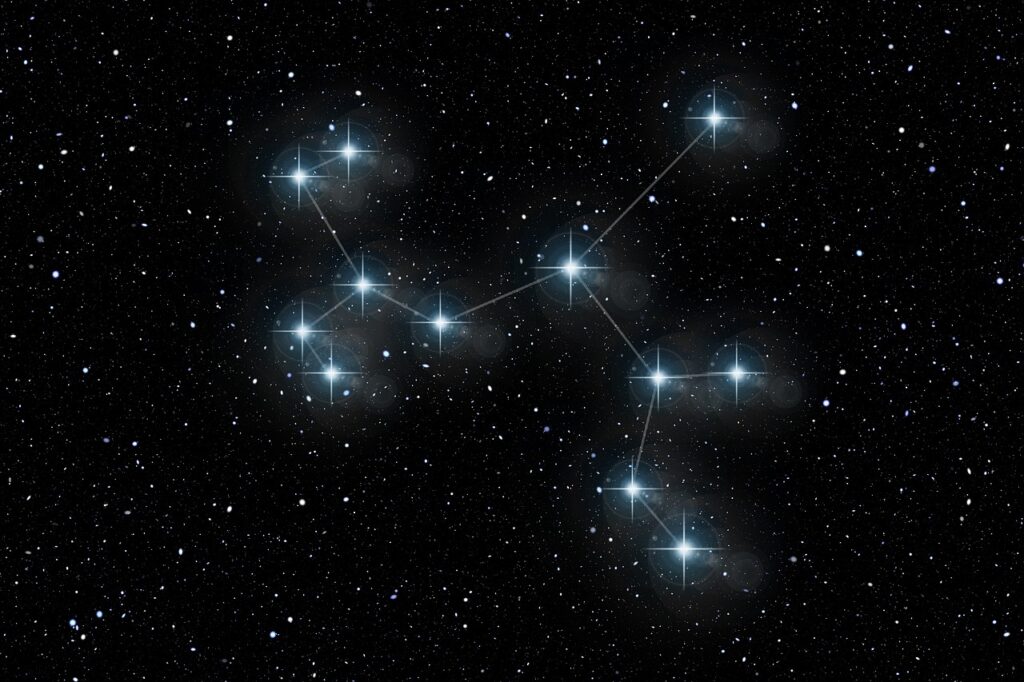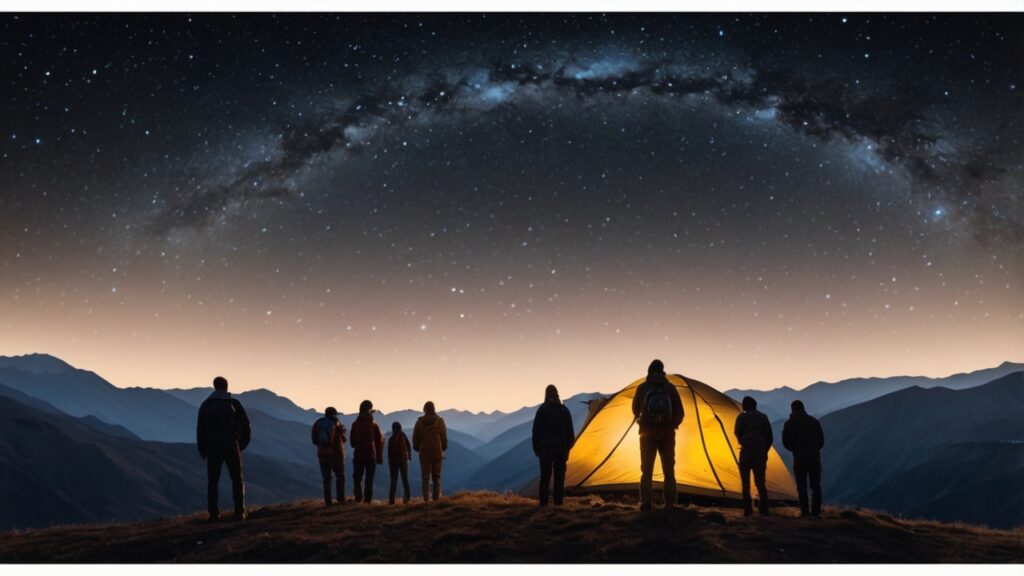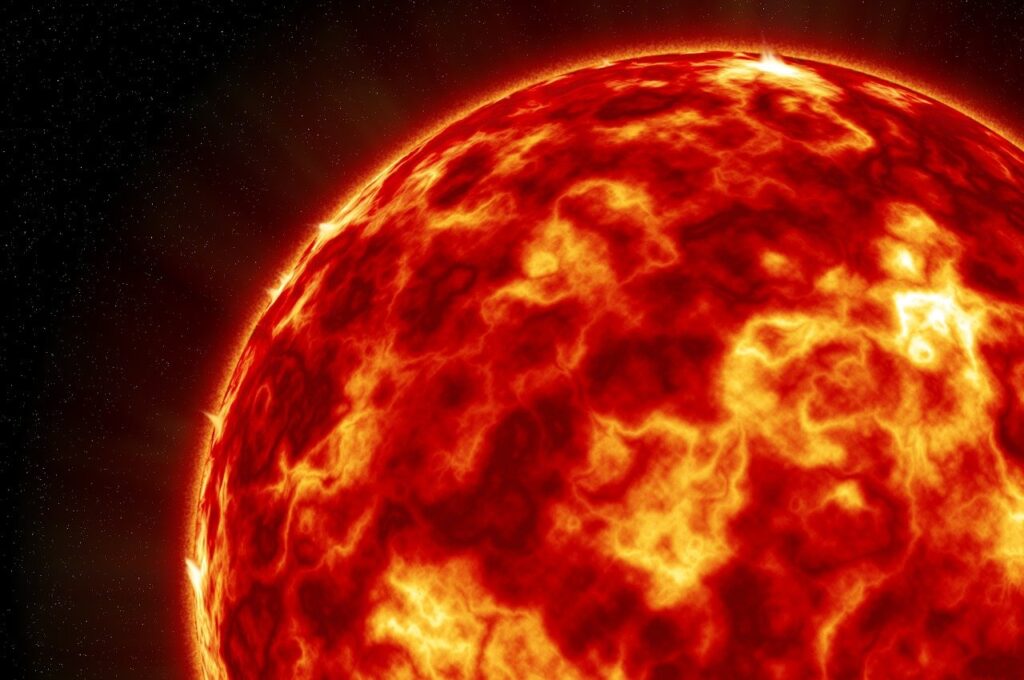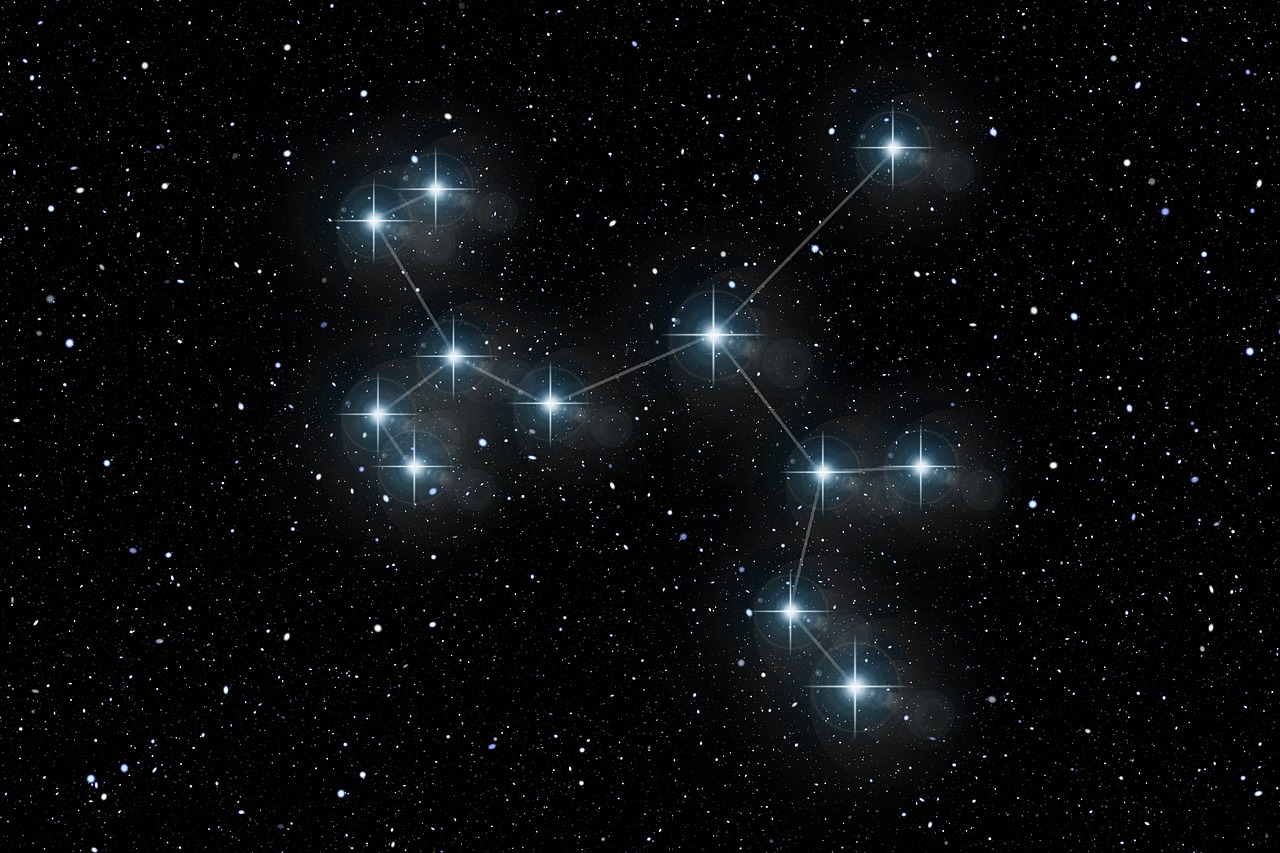
If you look at the stars on a clear night sky it feels exceptional and amazing. Centuries ago people used these stars to find their way and tell stories about stars to their kids. Those same stars are still present and shine above the night sky. When you try to learn to find the patterns of the stars (constellations) the stars stop looking like just random dots. Instead, you can see shapes and pictures and the best thing is you don’t need any fancy or advanced equipment you can start learning using just your imagination using your eyes.
1. Essential Preparation
1.1. Tools You’ll Need:
- Star Map Apps: you need to download the free apps from Play Store or IOS like Sky Safari or Star Walk and point your phone towards the sky to see real-time labels.
- Red-Light Flashlight: you should cover a flashlight with red cellophane to preserve night vision because light can ruin the whole plan.
- Paper Star Charts: For backup of tech-free nights you should try free prints from skymaps.com.
- Binoculars (Optional): It can reveal star clusters and moons of Jupiter.
1.2. Optimal Conditions:
- Find Dark Skies: For a better night sky view it should be advisable to escape city lights using DarkSky.org for light pollution maps.
- Clear Forecasts: Before leaving the city you should check cloud cover via apps like “Clear Outside”.
- Moon Awareness: New moon phases offer the darkest skies so utilize those days to discover stars.
- Comfort: Bring warm clothes layers a reclining chair, camp, and hot drinks along with you if you guys try to enjoy more and spend your night well.

2. Best Techniques for Finding Constellations
2.1. Start with Anchor Constellations:
These “celestial signposts” are your foundation:
2.1.1 The Big Dipper (Ursa Major):
- It looks like a cosmic ladle. Visible round a year in the Northern Hemisphere.
- Follow its two “pointer stars” (Dubhe and Merak) to “Polaris”, the North Star.
2.1.2 Orion the Hunter (Winter):
- Identify its three-star belt. Above it glows red “Betelgeuse”; below, blue “Rigel”.
2.2. Use Asterisms as Stepping Stones:
- From Big Dipper’s handle, arc to “Arcturus” (orange star in Bootes), then “spike” to Spica (Virgo).
- Orion’s belt points left to “Sirius” (brightest star, in Canis Major) and right to “Aldebaran” (red eye of Taurus).
2.3. Seasonal Stargazing Guide:
- Spring: Track the Leo’s “sickle” and Virgo’s spike near the Big Dipper.
- Summer: you can Spot the “Summer Triangle” Vega (Lyra), Deneb (Cygnus), and Altair (Aquila).
- Autumn: Find Pegasus’ “Great Square” and Andromeda Galaxy (faint smudge) nearest galaxy to our Milky Way galaxy.
- Winter: Follow Orion to Gemini’s “twin” stars and Taurus’ V-shaped Hyades cluster.
2.4. Polaris: Your True North:
- You can face Polaris (end of Little Dipper’s handle) you’re facing true north. You will see that all the stars in the night sky rotate counterclockwise around it.
3. Identifying Key Stars
3.1. Brightest Stars First:
You should memorize these “celestial headlights”:
- Sirius (Canis Major): Blazing white “Dog Star,” low in winter.
- Vega (Lyra): Blue-white summer star overhead.
- Arcturus (Bootes): Golden “spring star” high in the east.
- Capella (Auriga): Yellow beacon in winter’s northeast.
3.2. Star Colors Tell Secrets:
- Red Giants: They are usually ancient stars like Betelgeuse (Orion) and Antares (Scorpius).
- Blue-White Stars: These stars are relatively young, hot giants like Rigel (Orion) and Spica (Virgo).
3.3. Master Star Hopping:
It would be suggested to start from a known star and “hop” to new targets:
- Find Polaris: look opposite for W-shaped Cassiopeia.
- Spot Vega: nearby is the parallelogram-shaped Lyra.

4. Overcoming Common Challenges
4.1. Light Pollution Solutions:
- You should focus on bright stars and constellations (e.g., Orion, Cygnus).
- Urban stargazers: Rooftops or parks offer better views than streets.
4.2. Weather & Timing Woes:
- Apps like Astrospheric predict hourly sky clarity.
- You can observe just before dawn for exceptionally dark skies.
4.3. Patience is the Key:
- Start with one constellation per session for better exploration and revisit weekly to track seasonal shifts.
- Keep an observation journal sketch stars and note discoveries for later comparisons
5. Advanced Tips & Resources
5.1. Join the Stargazing Community:
- Attend local astronomy club events (find via NASA’s Night Sky Network).
- Participate in “Messier Marathons” (spring galaxy hunting challenges).
5.2. Top Learning Tools:
- Book: “Night Watch” by Terence Dickinson (beginner’s friendly charts).
- App: if you are a photographer? Use PhotoPills for Milky Way positioning.
- Online: Stellarium-web.org (free browse-based planetarium).
5.3. Planets & Special Events:
- Planets like Venus or Jupiter often outshine stars. Apps show their real-time positions near constellations.
- Track meteor showers (e.g., August’s Perseids) using EarthSky.org’s calendar.
Conclusion: Hope Your Cosmic Journey Begins Tonight
Finding the Orion’s belt or the North stat is not just about navigation it is about fulfilling your dreams, with each constellation you recognize that the universe is becoming more familiar. So, tonight plan your trip and explore the amazing constellation and stars you dream of. Find the Big Dipper or trace it to Polaris. Don’t forget to share your first discovered constellation with cosmicwrites.com by commenting below.
“We are all in the gutter, but some of us are looking at the stars.”
Oscar Wilde

lwgljhxifufpqkyvjvrjfwwujtdttn
Агрегатор.Топ – интегратор бизнеса.
Рынок коммерческих контрактов – размещайте контракты, находите сделки.
Для развития бизнеса на портале представлен автоматизированный подбор услуг страхования, кредитования, банковских гарантий и лизинга.
Быстрая заявка в один клик – более 70 банков, 20 страховых и 30 лизинговых компаний, дистанционная заявка в один клик.
Сайт
https://aggregator.top
Перед началом работы стоит ознакомиться с возможностями хрумера https://www.olx.ua/d/uk/obyavlenie/progon-hrumerom-dr-50-po-ahrefs-uvelichu-reyting-domena-IDXnHrG.html, чтобы избежать ошибок.
CreatBot D600 Pro 2 is a state-of-the-art 3D printing device designed for engineers demanding precision, reliability, and versatility in 3D printing devices. As part of the D600 lineup, it incorporates a large build volume, advanced dual extruder technology, and high-performance features suitable for industrial-scale applications and varied materials.
Overview of the CreatBot D600 Series
The CreatBot D600 and D600 Pro models establish new standards for large-scale 3D printers solutions. With a build volume of 600 ? 600 ? 600 mm, these industrial 3D printers cater to a wide range of industrial 3D printing demands, from large model prototyping to end-use production. The D600 pro series and the latest D600 Pro 2 introduce further enhancements in performance and material compatibility.
Main Features and Benefits
Large Industrial Build Volume
Build volume: 600 ? 600 ? 600 mm
Ideal for large-scale 3D printer projects and industrial 3D printing
Supports technical materials and complex prototypes
Dual Extrusion and High-Heat Printing
4th generation dual 1.75mm extruders for multi-material printing
Right and left-side extruder design for flexible printing process
Supports high performance 3D materials, including PLA filament, nylon filament, carbon fiber, and more
Maximum extruder temperature: up to 420°C (high-heat)
Heated build chamber for premium applications
Accuracy, Speed & Dependability
Professional 3d print quality with accurate layer resolution
Advanced motion system for fast printing and robust performance
Consistent print speed up to 120 mm/s
Reliable operation for continuous industrial use
Compatible Materials and Filaments
Broad Filament Support
Works with a broad spectrum of filament: PLA, ABS, PC, PETG, PVA, nylon filament, carbon fiber, and more
Designed for technical materials and functional prototyping
Advanced dual extrusion system enables multi-material and soluble support printing
Uses: Prototyping & Manufacturing
The CreatBot D600 Pro 2 and D600 Pro serve a diverse set of applications:
Rapid prototyping and large format 3D print models
Functional parts for automotive, aerospace, and engineering
Tooling, jigs, and fixtures for industrial production
Art, architecture, and creative projects requiring large industrial 3D printing
Specs
Model: CreatBot D600 Pro 2, D600 Pro, D600
Build size: 600 ? 600 ? 600 mm
Extruder: Dual extruder, 4th generation 1.75mm dual extruders and hotends
Max nozzle temperature: 420°C
Bed temperature: up to 100°C
Filament size: 1.75 mm
Layer resolution: 0.05 – 0.3 mm
Supported materials: PLA, ABS, PC, PETG, PVA, nylon, carbon fiber, engineering-grade materials
Printing speed: up to 120 mm/s
Chamber: Heated, for improved material properties
Interface: Touchscreen interface
File formats: STL, OBJ, AMF
Comparison: D600, D600 Pro, and D600 Pro 2
Feature Differences
D600: Entry-level industrial large scale 3d printer for basic applications
D600 Pro model: Enhanced with heated chamber, auto bed leveling, and wider material support
D600 Pro 2 model (professional version): Adds higher print speed, improved reliability, and HS (high speed) configuration
Additional CreatBot Printers
CreatBot D1000 for even larger build volumes
CreatBot lineup includes industrial and professional 3d printer solutions
Frequently Asked Questions (FAQ)
What materials can the CreatBot D600 Pro 2 print?
The D600 Pro 2 is compatible with a wide range of filament types including PLA, ABS, PETG, PC, nylon, carbon fiber, and other engineering-grade materials.
What is the maximum build volume of the D600 Pro 2?
The build volume is 600 ? 600 ? 600 mm, supporting large model and industrial 3d printing needs.
Dual Extruder and High-Temp Support on D600 Pro 2
Yes, it is equipped with dual extruder technology and reaches up to 420°C for high-temperature printing.
What differentiates the D600 Pro 2 from the D600 Pro?
The Pro Version offers higher print speed, improved reliability, and the new HS (high speed) option.
Summary
The CreatBot D600 Pro 2 and the D600 Pro set the benchmark in the industrial large scale 3d printer category. With exceptional build volume, robust dual extrusion system, compatibility with engineering-grade materials, and top performance across applications, they empower businesses and engineers to achieve new heights in industrial 3D print.
high performance 3d
creatbot d600 pro
nylon
3d printer